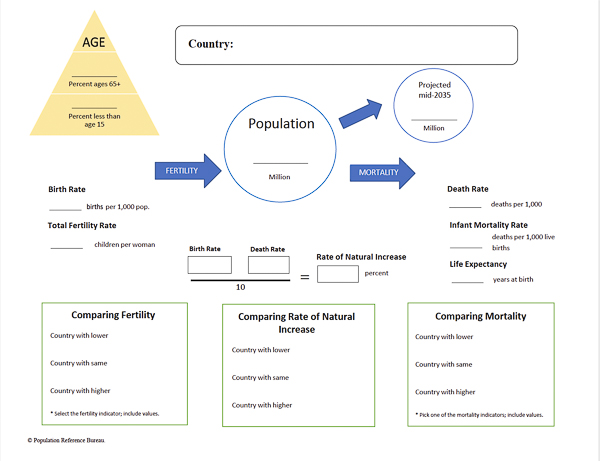Empowering Women, Developing Society: Female Education in the Middle East and North Africa
(2003) Education is a key part of strategies to improve individuals' well-being and societies' economic and social development.
(2003) Education is a key part of strategies to improve individuals' well-being and societies' economic and social development.
Project: PACE: Policy, Advocacy, and Communication Enhanced for Population and Reproductive Health
2019 World Population Data Sheet: Wolves, Water, and War: The Importance of the Census Throughout History

Project: PACE: Policy, Advocacy, and Communication Enhanced for Population and Reproductive Health
The 2020 World Population Data Sheet offers the latest population, health, and environment indicators for more than 200 countries and territories, each carefully researched by PRB’s expert team of demographers and analysts.

Project: PACE: Policy, Advocacy, and Communication Enhanced for Population and Reproductive Health
PRB’s World Population Data Sheet is an excellent reference and data analysis tool. Teachers are encouraged to have their students use the Data Sheet for a variety of topics and activities.
Project: Center for Public Information on Population Research (CPIPR)
(2012) Despite declining rates, teen birth rates in the United States remain persistently high, at 34.4 births per 1,000 women ages 15 to 19.

Household size and composition play an important role in the economic and social well-being of families and individuals.
(August 2006) The chimpanzees of Gombe National Park in Kigoma Region, Tanzania, have come under increased pressure from four decades of high human population growth in the region and an associated increase in human activity and disease.
(2008) There has been increasing international news coverage of the excess of young boys in India resulting from the abortion of female fetuses.1
Project: IDEA: Informing Decisionmakers to Act
(2014) In 2012, the government of Kenya passed a landmark policy to manage its rapid population growth. The new population policy aims to reduce the number of children a woman has over her lifetime from 5 in 2009 to 3 by 2030.2